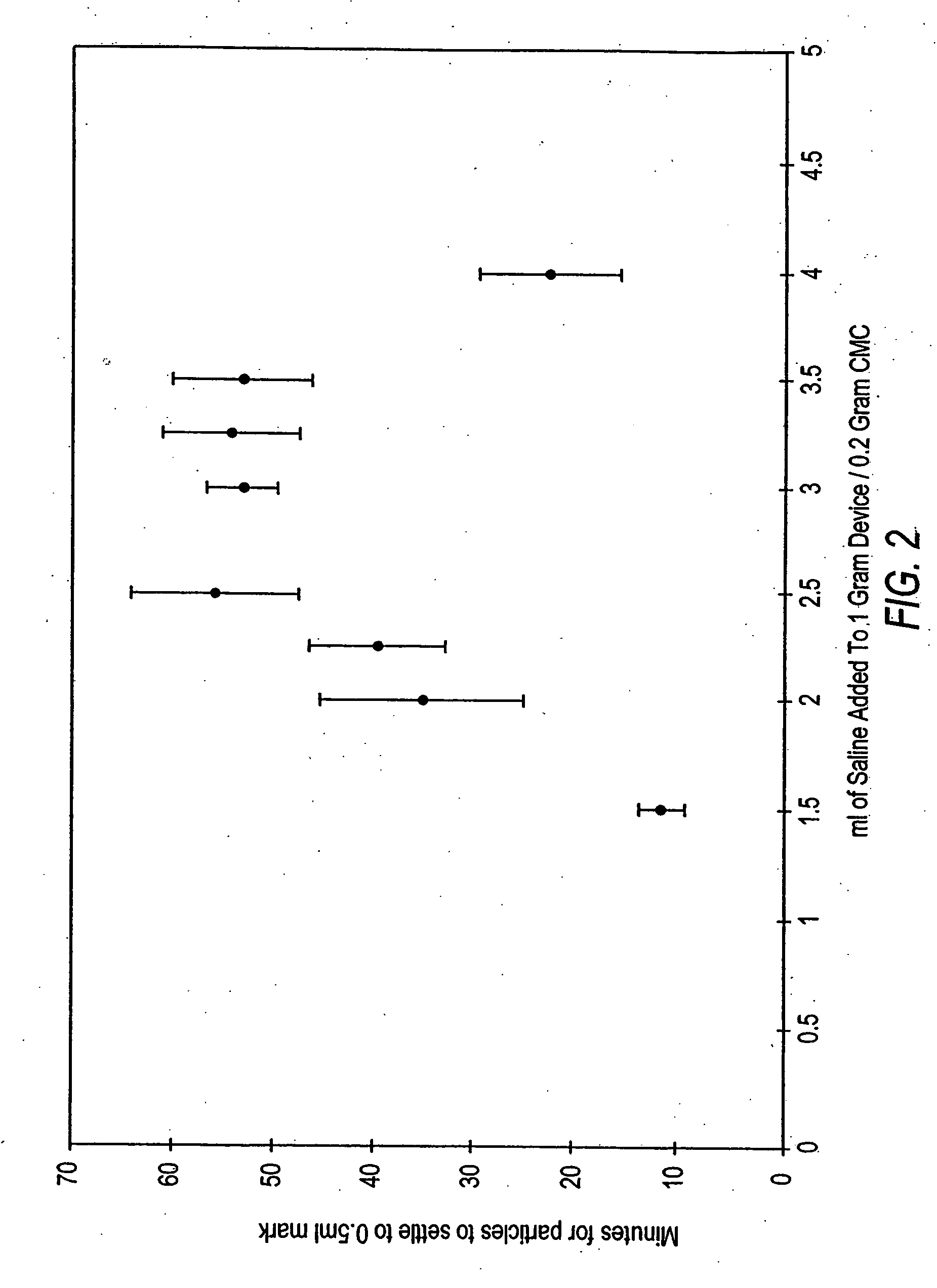Osteogenic devices and methods of use thereof for repair of endochondral bone and osteochondral defects
a technology of osteochondral bone and osteochondral defect, which is applied in the field of osteogenic protein-based materials and methods for repairing bone and cartilage defects, can solve problems that have been ignored and achieve the effect of avoiding undesirable formation and restoring an osteochondral or a chondral d
- Summary
- Abstract
- Description
- Claims
- Application Information
AI Technical Summary
Benefits of technology
Problems solved by technology
Method used
Image
Examples
experiment 1
[0119] 1. Unitary Device Configuration (Dogs)
[0120] This study illustrates the efficacy of OP-1 combined with collagen matrix and carboxymethylcellulose for repairing critical-size ulna segmental defects in the art-recognized canine model.
[0121] Briefly, the data set forth below indicate at least comparable radiographic healing at sites that received a CMC / OP-1 device relative to segmental defects treated with the standard OP device. The final radiographic grade (maximum=6.0) for defects treated with CMC / OP-1 was 5.33±0.58 compared to 4.67±0.58 for defect receiving the standard OP-1 device. In general, new bone formation was evident as early as two weeks post-operative in all defects. The new bone continued to densify, consolidate and remodel until sacrifice at twelve post-operative weeks. The mean load to failure of the defects treated with the CMC / OP-1 device was 59.33 N±26.77. This was 70% of the mean load to failure of the contralateral sides which received the standard OP-1 i...
experiment 2
[0142] 2. OP-1 Dose Response Using Non-Unitary Device Configuration (Dogs)
[0143] This study further illustrates the efficacy of standard osteogenic device admixed with carboxymethylcellulose (CMC) using both standard and low OP-1 dose formulations to heal large, critical size segmental defects in the canine ulna segmental defect model.
[0144] As described in detail below, various dosages of OP-1 were employed in this study. Briefly, the low dose formulations of the OP-1 device without CMC were found effective at inducing new bone formation, but less so than the standard dose OP-1 device. However, and unexpectedly, defects treated with the low dose CMC-containing device demonstrated earlier and larger volumes of new bone formation compared to the low dose OP-1 device without CMC. The standard or low dose OP-1 device was prepared by combining a 1 g OP-1 device with 3.2 ml sterile saline. The standard or low dose OP-1 device containing CMC was prepared by combining 1 g OP-1 device wit...
PUM
| Property | Measurement | Unit |
|---|---|---|
| molecular weights | aaaaa | aaaaa |
| molecular weights | aaaaa | aaaaa |
| molecular weights | aaaaa | aaaaa |
Abstract
Description
Claims
Application Information
 Login to View More
Login to View More - R&D
- Intellectual Property
- Life Sciences
- Materials
- Tech Scout
- Unparalleled Data Quality
- Higher Quality Content
- 60% Fewer Hallucinations
Browse by: Latest US Patents, China's latest patents, Technical Efficacy Thesaurus, Application Domain, Technology Topic, Popular Technical Reports.
© 2025 PatSnap. All rights reserved.Legal|Privacy policy|Modern Slavery Act Transparency Statement|Sitemap|About US| Contact US: help@patsnap.com


